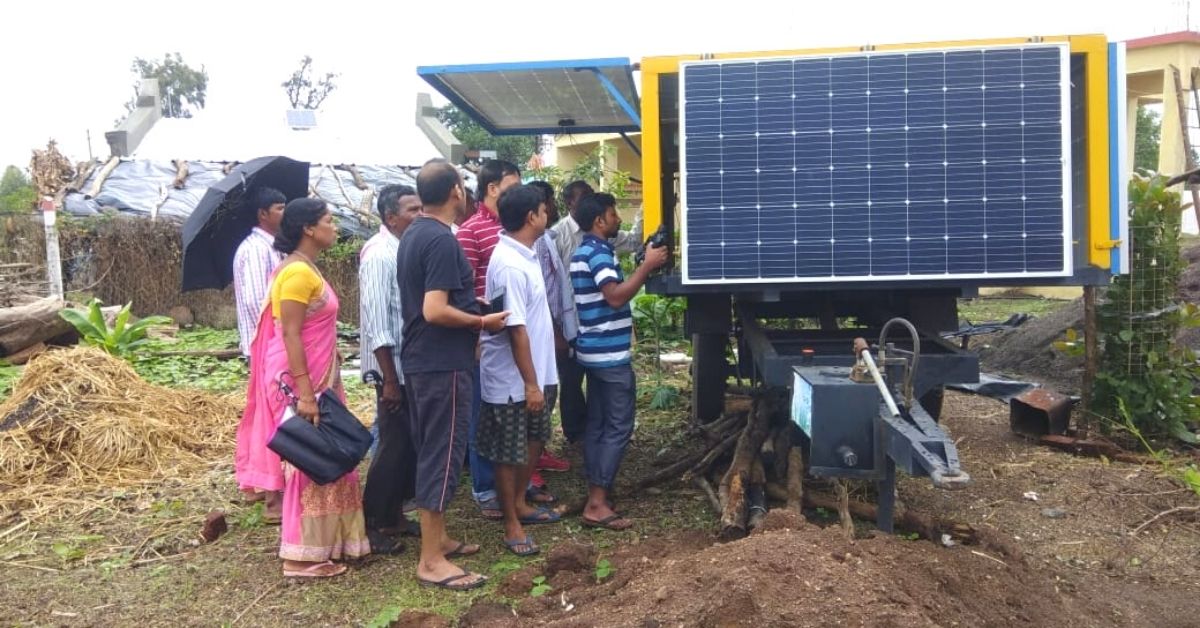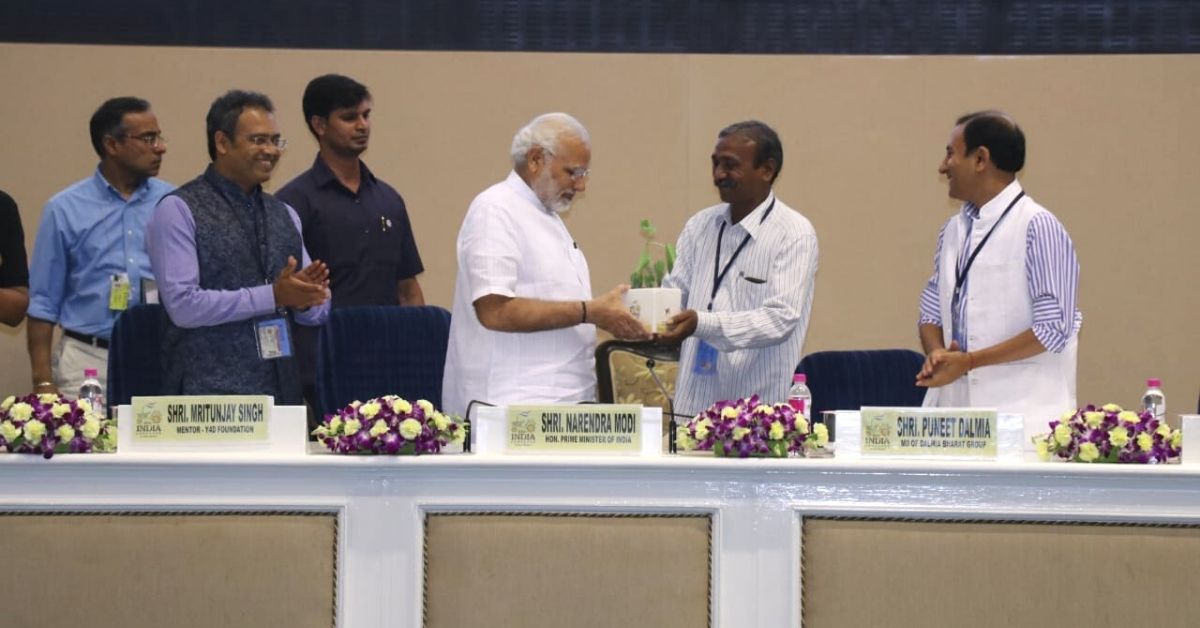After 15 Years of Effort, Maharashtra Man Helps Turn Tribal Village to Solar Power
Chaitram Pawar from Baripada village near Dhule has spearheaded multiple initiatives to promote solar lights, water pumps and cookers in the hamlet

Walking in the Baripada village, about 100 km from Dhule in Maharashtra, will give you the distinct feeling of being in a place that is very different to the several villages you have passed on the way over. Apart from the dense greenery, what would catch your notice is all the energy – solar, that is.
From water pumps to almost all the lights, this entire village (silently) hums with solar power. For a village deep in Maharashtra’s tribal belt, this is not just unique, but nothing short of a revolution.
12-hour long power cuts
With a population of around 1,000 residents, spread across 300 hectares of land, Baripada faced the same acute power shortages that plague thousands of villages across the country.
“Being in the interior parts of the region, the village faced a lot of electricity supply issues for years. There is load shedding for almost 12 hours a day, making agriculture activity difficult,” said Chaitram Pawar, a social worker in the village.
The 52-year-old Chaitram has been working for 30 years to bring sustainable reforms to the village, working on water conservation, afforestation and promoting sustainable agriculture practices. The social worker is associated with the Vanvasi Kalyan Ashram, an NGO also helps farmers to understand weather and provide necessary information to protect crops from harsh conditions.

“We address problems like accessing water for agriculture and drinking. Among the many steps we take to ease such challenges, we conduct training and workshops by experts from outside the village,” Chaitram said.
On one such occasion in 2014, the villagers learned about solar water pumps and its ability to work without electricity. The idea took everyone by storm and they made plans to get the pumps immediately.
Solar initiatives
“One Sunil Trivedi helped us to source the first solar pump of 2KW in the village through the Desh Bandhu Manju Gupta Foundation. Satisfied by the functioning of the solar water pumps, another 32 solar water pumps were procured from the Meenakshi Mehta Foundation,” Chaitram said.
Read More: Mumbai Startup’s End-to-End Solution Helps Societies Cut Power Bills By 95%
The social worker said they deliberately decided on a lower-powered solar water pump. “We had the opportunity to install a water pump for a higher power of 5KW. But we decided that there was no need to withdraw excess groundwater than we need,” he adds.
This could not have happened without a change in mindset. Chaitram says that any initiative planned for the village never succeeds without the consent of the villagers.
“All the villagers come together and decide on the initiatives. I had the idea of using the benefits of solar energy long ago. I waited for 15 years for the villagers to accept the idea and experiment with one solar water pump,” he adds.

“They realised the importance of solar energy and how effective it was in terms of improving their lifestyle,” the social worker said.
The next step was bringing lights to the village. “We had no electricity for elders to see inside the houses. The women cooked in the dark while smoke from burning firewood filled the rooms, the children could not study, and we could not see if snakes had entered the house,” Chaitram said.
In 2017, villagers approached the tribal department. “We expressed our problems about the electricity supply and suggested solar solutions through government schemes,” Chaitram told The Better India. The tribal department of the state government agreed to bring help to the village – after some convincing.
“There is a provision of the nuclear budget scheme of the department for solar units,” said Rajaram Halpe, project officer of the Integrated Tribal Development Project, Dhule.
Rajaram said that the department heard a lot about the good work that had already been done in the village. “A team of officers visited and confirmed the feasibility of installing portable and permanent solar systems,” he added.
The project officer said that initially 15 per cent of the total contribution was collected from the villagers. The subsidy was passed for the remaining sum. “In 2018, 94 homes got lit with villagers contributing Rs 3.5 lakh while the department spent Rs 19.82 lakh. The next year an additional 82 homes were added, with the entire cost borne by the government – spending Rs 19.76 lakh,” he added.
Rajaram said with no grid electricity available most of the times, about 80 per cent of the village’s needs are sustained through solar power.
Larger impact

Chaitram said that today, all farming activity, irrigation and other tasks of agriculture are carried out by solar energy. “There are a few portable units, carried across the village and used by multiple people,” he added.
Taking a cue of the efforts, neighbouring villages like Mapalgaon, Chavadipada, Mohagaon, and Kaldar have also started taking up solar initiatives.
Chaitram’s work also got recognition by PM Narendra Modi, as a mention as a ‘Rural Achiever’ in the New India Conclave under Youth For Development, Delhi in 2018.
“It is not my initiative alone as many stakeholders have come together and supported each other to make the projects successful,” he feels.
“We aim to make more sustainable alternatives available. We have procured a solar dryer and solar cooker from the United Nations Development Programme (UNDP) to promote the use of solar energy,” he adds.
(Edited by Vinayak Hegde)
If you found our stories insightful, informative, or even just enjoyable, we invite you to consider making a voluntary payment to support the work we do at The Better India. Your contribution helps us continue producing quality content that educates, inspires, and drives positive change.
Choose one of the payment options below for your contribution-
By paying for the stories you value, you directly contribute to sustaining our efforts focused on making a difference in the world. Together, let’s ensure that impactful stories continue to be told and shared, enriching lives and communities alike.
Thank you for your support. Here are some frequently asked questions you might find helpful to know why you are contributing?


This story made me
-
97
-
121
-
89
-
167













